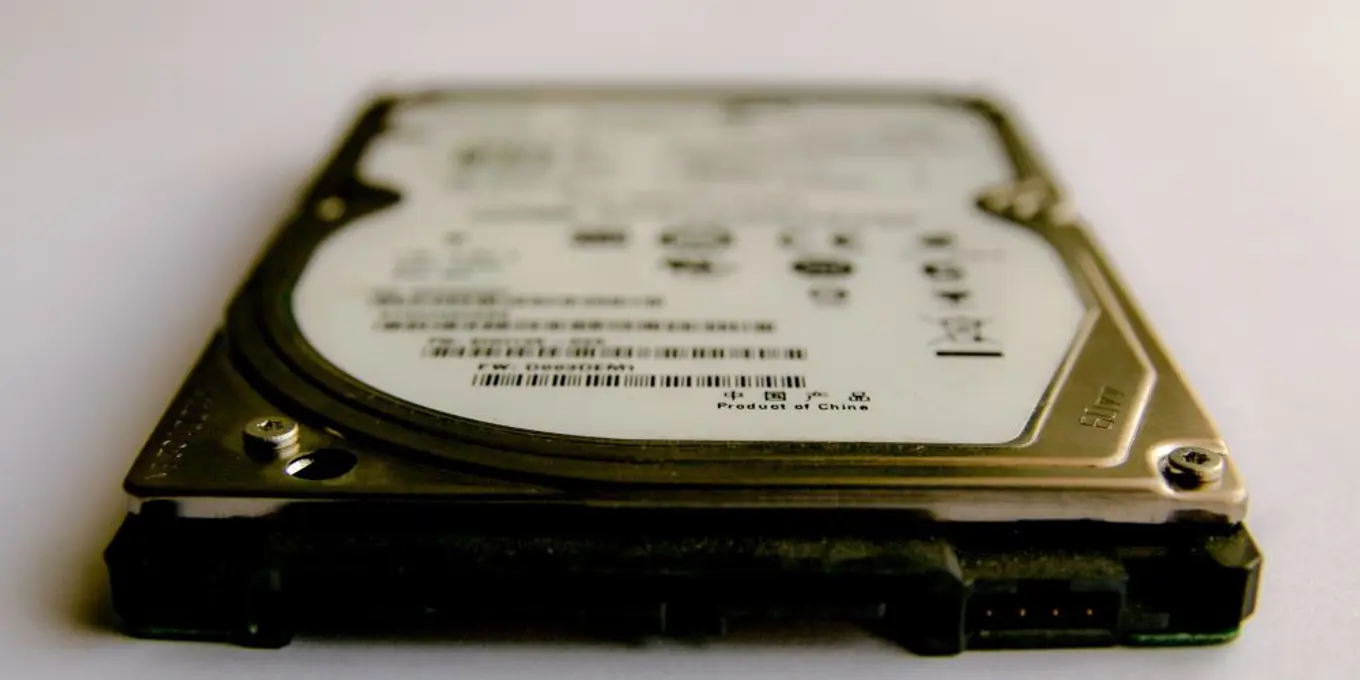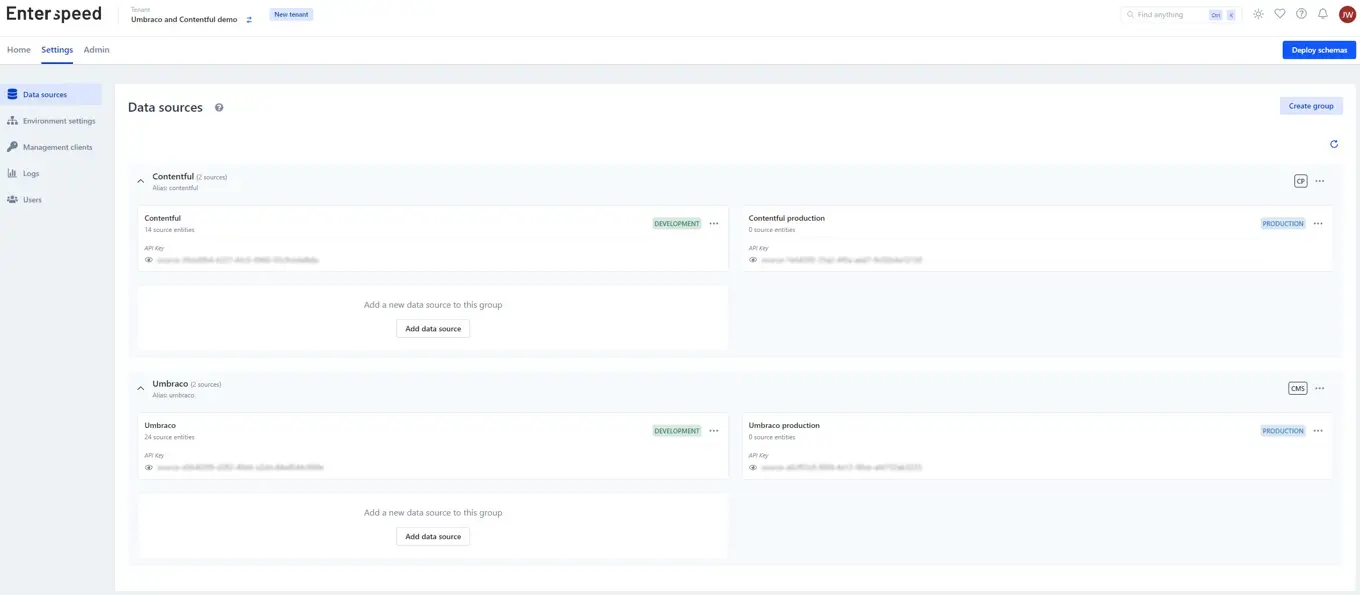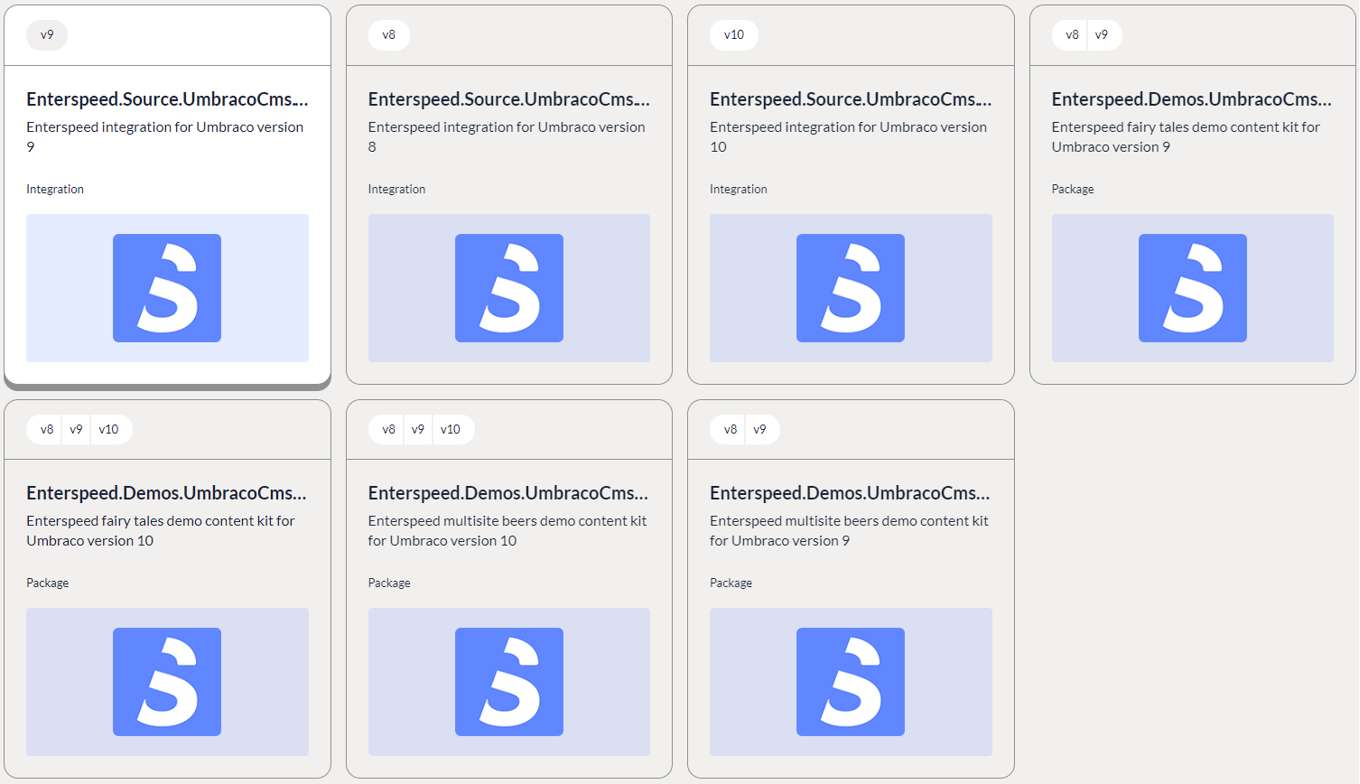
Building a composable infrastructure in the Umbraco ecosystem
Written by: Toke Lund, CEO at Umbraco Tech Partner Enterspeed
There are multiple points to composable IT.
It allows you to choose not only best-of-breed components, but also the components that best fit your exact organisational needs. You also get to decouple the presentation layer and go headless. As a result, you can build one or more digital customer experiences, and you can separate backend and frontend concerns.
Don’t turn a blind eye to the hidden cost

But let’s be honest. Headless architecture and composability are not only a blessing. If you move from a monolithic architecture to composable, you might be giving your developers more flexibility, but you might also invite a myriad of integrations and custom fixes to your stack.
Thus, flexibility often comes with a price of more complexity. And too often, it’ll leave you with lower performance, a heavy maintenance load, and developer lock-in.
*Ouch*
For some, moving from monolithic to composable architecture also involves saying goodbye to legacy data and content you might actually want to keep. And starting completely over is no small undertaking.
It’s by no means unseen that the cost of moving to a new architecture is so overwhelming that some choose to stay on known land.
And that’s a shame. Especially if you’re using systems that are nearing End-of-Life (EOL).
Keep your legacy while going composable
It needs to be said: Going composable doesn’t have to mean the end of everything you have in your old, monolithic architecture.
We’ve come across several organisations, who’ve been advised by solution partners to scrap everything they have and start over in a headless, composable architecture. That especially happens if the existing stack is based on a CMS going EOL.
But hold your horses.
If you’re on any CMS announced to go EOL – and dream of a new stack with e.g., a new Umbraco version, you don’t have to scrap everything you already have. Not even if you’re moving from a monolith to composable.
It’s perfectly doable to create a new architecture that combines your legacy data with new sources in a composable stack. Because why make yourselves vulnerable in a major move to a completely unknown land, when you can make a more subtle architectural change?

That’s what we want to do with Enterspeed.
We want to enable you to create true flexibility. Asking you to ignore what you already have and start from scrats in a new architecture is not flexible. Combing the data you need – be it new or old – is.
We typically advise a three-step model:
1️⃣ Build a new front end
2️⃣ Decouple additional sources from your current solution (using Enterspeed)
3️⃣ Keep or change your CMS
1: Build a new front end
Begin by building your new, decoupled front end(s). When it’s not deeply incorporated into your CMS, you can focus on creating a strong user experience.
Instead of connecting it directly to the remainder of your monolith, you add Enterspeed’s Speed Layer as your Digital Experience Composition (DXC) between your new frontend(s) and the old architecture.
At this point, your data sources are still part of your current version, but because you put Enterspeed in as a Speed Layer, your front end only runs on the data served out of Enterspeed.
2: Decouple additional sources from your current solution
Since Enterspeed stores all data from your current system, you can start disconnecting or adding sources directly to Enterspeed instead of your current CMS installation without users noticing.

Because Enterspeed stores your data, you eliminate the risk associated with live upgrading your data sources.
3: Keep or change your CMS
Now, if you’ve followed the steps, your architecture is now far less vulnerable and complex than before.
You’ve already separated both your front end and your data sources from, e.g., Umbraco 7, so it’s not at risk of being affected by your updates.
And now, you can upgrade to a newer CMS version.
You implement all upgrades and new integrations in the backend, and you’re not pushing anything to the front before it’s tested and reported ready. Your front end only reaches down into Enterspeed, and only when the sources are fully integrated into Enterspeed, do you close the "old" integrations.
If surprises occur, it's easy to switch back to the old version.
Going from old to new Umbraco? How to migrate CMS data
So, what happens with the buckets and buckets of content in your old version? You don’t really want to start over completely, but on the other hand, you don’t want to spend hundreds of hours migrating CMS data either.
In Enterspeed, we developed a migrator extension that can transfer structure and content from one CMS to another in just one minute... Yes. We said it 🚀
Check out the POC video below, where we successfully migrate an Umbraco V7 to an Umbraco V10 solution in 60 seconds 🚀
If you’re curious to know more about lower-risk version upgrading, you can jump to Enterspeed’s blog post on CMSs going end of life.
Tech agnostic – but heavy on the Umbraco love ❤️
But what does that mean for Umbraco partners?
Well, to anyone looking to move to a new version of Umbraco, the benefits are evident. Most notably, you’ve removed a huge amount of complexity.
Basically, you’ve set yourself (or your customer) up for an upgrade that’s become rather "standard." And not only will the move itself be much smoother and less risky, it’ll also be much easier to keep up with the upgrades that will no doubt keep coming.
Enterspeed enables partners to utilise Umbraco CMS as part of composable architecture – whether it’s in a headless solution on legacy or a completely new build.
Our Speed Layer is tech agnostic. We transform, consolidate, and store data from multiple source types, and we’re not locked in on any one technology provider.
And we do love Umbraco ❤️
Not only because we’re both based out of Denmark, but because Umbraco is truly a great CMS and the editor experience is hands down absolutely world-class.

Plus, (almost) just as importantly, Umbraco has an awesome community spread across most of the globe. That is both a benefit for our marketeers who are working to push Enterspeed into still more markets, but it’s also a major plus for our software engineers as they get access to input from developers who can test our Speed Layer in new configurations.

It was especially the access to an extremely skilled developer community that convinced us of an Umbraco Tech Partnership. Both Umbraco and Enterspeed have composable-centered products that complement each other perfectly. That’s reflected in our collaboration, where Umbraco is a very involved partner. They are committed to endorsing our Speed Layer, and they help us form valuable relationships with Implementation Partners in various markets, where we hope to gain stronger footing.
Want to check out more about Enterspeed on Umbraco?
You can go to our prepared packages on Umbraco’s Marketplace.
